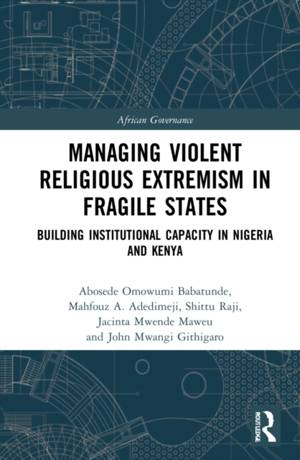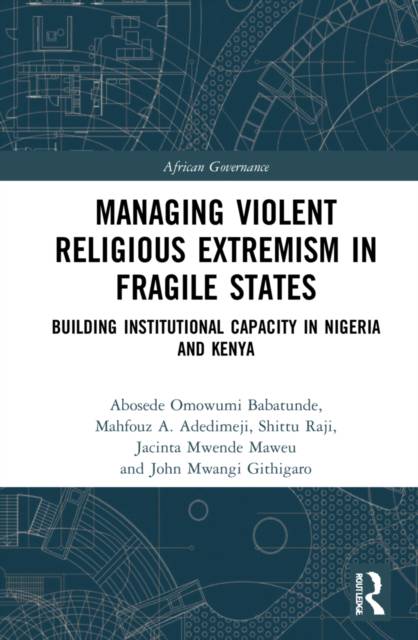
- Retrait gratuit dans votre magasin Club
- 7.000.000 titres dans notre catalogue
- Payer en toute sécurité
- Toujours un magasin près de chez vous
- Retrait gratuit dans votre magasin Club
- 7.000.0000 titres dans notre catalogue
- Payer en toute sécurité
- Toujours un magasin près de chez vous
Managing Violent Religious Extremism in Fragile States
Building Institutional Capacity in Nigeria and Kenya
Abosede Omowumi Babatunde, Mahfouz A Adedimeji, Shittu Raji, Jacinta Mwende Maweu, John Mwangi GithigaroDescription
This book examines how African states can build the institutional capacity to better prevent, manage and cope with the new security challenges posed by violent religious extremism.
Despite the evidence that violent religious extremism is exacerbated by underlying social, political, economic and governance factors, many states have focused their efforts only on reactive and coercive response strategies, overlooking more long-term measures. This comparative study of Nigeria and Kenya reflects on why insurgency in Kenya has not escalated to full blown terrorism as it has with Boko Haram in Nigeria, in spite of the similarities in relatively weak institutions of governance and colonial legacies across the two countries. The book interrogates the policy and institutional responses that have been put in place in both countries to address security challenges, and the extent of their efficacy in light of the intricate networks of politics, governance, corruption, poverty and violence and the relative fragility of state institutions. The authors highlight the areas of convergence and divergence in institutional capacities and recommend policies to enhance the capacity of institutions to manage violent religious extremism.
This book will be of interest to scholars of African Politics, Security, Peace Studies and Terrorism.
Spécifications
Parties prenantes
- Auteur(s) :
- Editeur:
Contenu
- Nombre de pages :
- 284
- Langue:
- Anglais
- Collection :
Caractéristiques
- EAN:
- 9780367342395
- Date de parution :
- 30-09-21
- Format:
- Livre relié
- Format numérique:
- Genaaid
- Dimensions :
- 156 mm x 234 mm
- Poids :
- 594 g

Les avis
Nous publions uniquement les avis qui respectent les conditions requises. Consultez nos conditions pour les avis.






